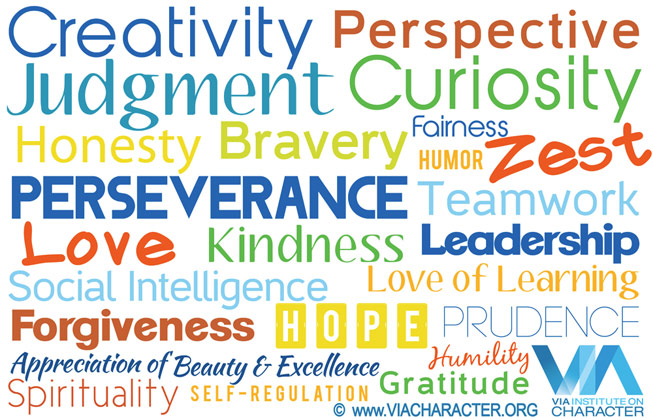In these extraordinary times, we’re encountering a dizzying array of unwanted challenges and disruptions in daily life. Many of us cannot connect in person with family, friends, and teammates. Others have lost work and opportunities. Sadly, there are even more tragic repercussions. It’s enough to create a sense of hopelessness in even the most positive people.
Fortunately, research around character strengths shows us how to shift into what’s strong to help us face virtually every situation with strength and resilience. Character strengths reflect who we are and how we contribute.Since COVID-19 entered our lives, I’ve noticed that my top strength, creativity, is calling my name to help navigate difficult situations. For instance, during a stressful text exchange with my sister, I offered a few novel ways to solve a family problem. I was tempted to avoid replying – it was late on a Sunday evening, and I was tired. Creativity gave me the capacity to engage. Channeling creativity didn’t change the stressor, but it shifted me toward my best, kept me grounded and allowed me to contribute from a position of strength.
Most likely, your signature strengths look different than mine. Your top strength might be hope, giving you the power to envision a positive, yet realistic, future. Or, your number one strength might be bravery, making you a force that gives a voice to the voiceless.
No matter your signature strengths, your unique contributions are sorely needed in your home life, work life and community. But, here’s the thing: although the idea of engaging strengths seems appealing to virtually everyone, not everyone practices living into them. The value comes from putting them into practice.

The Inspiration
In my work with individuals and groups, I’ve noticed a variety of obstacles to living into one’s strengths. Below are two of the most common:
- We don’t have the language to describe what’s good and strong within ourselves. Growing up, many of us learned to avoid speaking of ourselves in positive ways due to modesty concerns. We’re good at describing what’s wrong and what we can do better, but not who we are at our best.
- The human brain is hardwired to attend to what’s wrong – problems, challenges and weaknesses. We’re often not aware this is happening. What doesn’t work attracts us like a magnet.
Luckily the fist item can be addressed by taking the free, scientific character strengths assessment taken by more than 10 million people globally. In about 15 minutes, you can discover your unique strengths profile.
The second is more complex. Humans have a natural instinct dating back to ancient times to scan the environment for threats. This instinct remains active in us today. Although helpful in some circumstances, it’s also a reason we can over-invest time and resources dwelling on what’s wrong at the expense of what’s strong.
There’s so much that feels wrong about life during this pandemic, but you can shift into what’s strong to feel a greater sense of ease, energy and flow. Research shows that building strengths is where our greatest contributions lie.
I invite you to experience for yourself how shifting from wrong to strong can create positive results. The following practice is inspired by the work of Michelle McQuaid, an expert in positive organizational leadership.
The Practice
For this practice, you’ll need a pen and some paper.
- Place a pen in your dominant hand, then write your full name.
- Switch the pen to your non-dominant hand. Again, write your full name.
- Describe the differences between your two experiences
Many people describe writing with the non-dominant hand as more effortful, difficult, and time-consuming. They aren’t as pleased with the outcome.
Often, this is what it feels like to improve a weakness. If you practiced writing with your non-dominant hand, you could probably improve over time. However, it would likely take many hours to progress, let alone achieve the same results.
Conversely, writing with the dominant hand typically has an ease and flow. It’s faster and requires less effort. The results are pleasing. Often, this is what it feels like to build, and live into, our strengths.
The Reflection
Begin by bringing one of your signature strengths to mind. If you don’t know your top strengths, you can discover them now, or simply use the graphic below as a reminder of the 24 character strengths. Then return to the reflection.
As I tackle my next challenge today, my strength of _____ can help me by _____.
Think of one way you can put this strength into action and then try it as you go forward.





